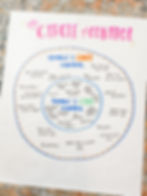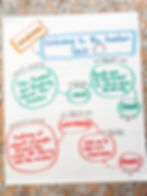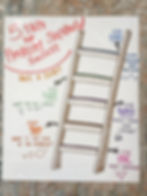The Size of our Problems and How to Solve Them
- Kim Gameroz
- Mar 25, 2024
- 3 min read
Updated: May 6, 2025
All problems are not created equal. For children, they can be as small as needing a new pencil or as complicated as having to cope with a family tragedy.
There are small problems, medium problems, and big problems. Depending on the size of the problem, it is expected to react to problems in a way that matches (or is smaller than) the size of the problem. And this is where Social Emotional Learning is crucial.
Here are my favorite anchor charts to TEACH our students how to recognize the size of their problems and how to solve them!
Size of the Problem
What is the size of your problem? And what can you do in order to solve it? It can be tricky trying to match our reaction size to the size of our problems, especially when at the time, they can seem so much bigger than they actually are.
Create this visual with your students and use it to reflect after big situations and to set goals BEFORE those big situations start to arise.
Circle of Control
By now, your students have become quite close, and I'm sure there is more arguing and drama than you'd like to admit.
Bring everything back to their Circle of Control.
They aren't in control of their friend/frenemy/peer, but they ARE in control of themselves.
Ask them what THEY are going to do the next time something like that happens.
Social-Emotional Chain Reaction
This super simple Social-Emotional Chain Reaction is EVERYTHING when it comes to teaching our students about their behavior, the choices they make, the consequences of their actions and reactions, AND it includes that reflection piece at the end.
We want to focus more on how they FEEL about themselves to create a behavior change that we want to see more of.
Problem-Solving Ladder
Refer back to the previous anchor charts, reflect with your students on that learning, and talk through these actionable steps of how students can work through their emotions.
When students come up to you and ask you what to do, refer back to this anchor chart so that they start to learn HOW to solve some problems on their own.
Figuring out the size of the problem, and matching our reaction size to the size of our problem helps develop our students' awareness and problem-solving skills. Empowering our students to be aware of others' behavior as well as their own reactions is key to creating a calm, learning-centered classroom.
Want more ANCHOR CHARTS?
Get access to my FREEBIE Anchor Chart Bundle!
Want more of this content? Join our free Facebook and Instagram communities to hear more from Kim and other like-minded and heart-centered educators and parents!
Want to stay in the loop? Join our email list on our homepage to get the latest tips, tricks, and strategies to support social and emotional learning!
Disclaimer: The resources and ideas found on this website are all research-based and vetted with a parent and educator lens. The tools listed have worked for students and children that I work with; however, each child is different. This list is not exhaustive and is a compilation of ideas and strategies to try in schools or at home. No information on this website should be used as medical advice. I am not a clinical psychologist, but I do work alongside them as thought partners in this journey.
.png)













